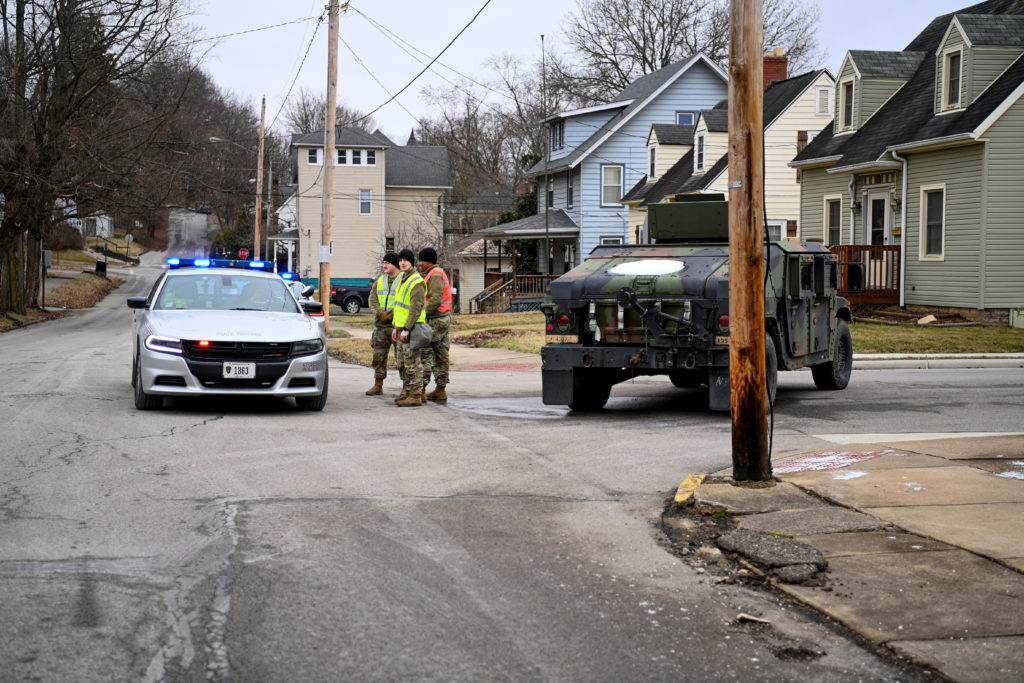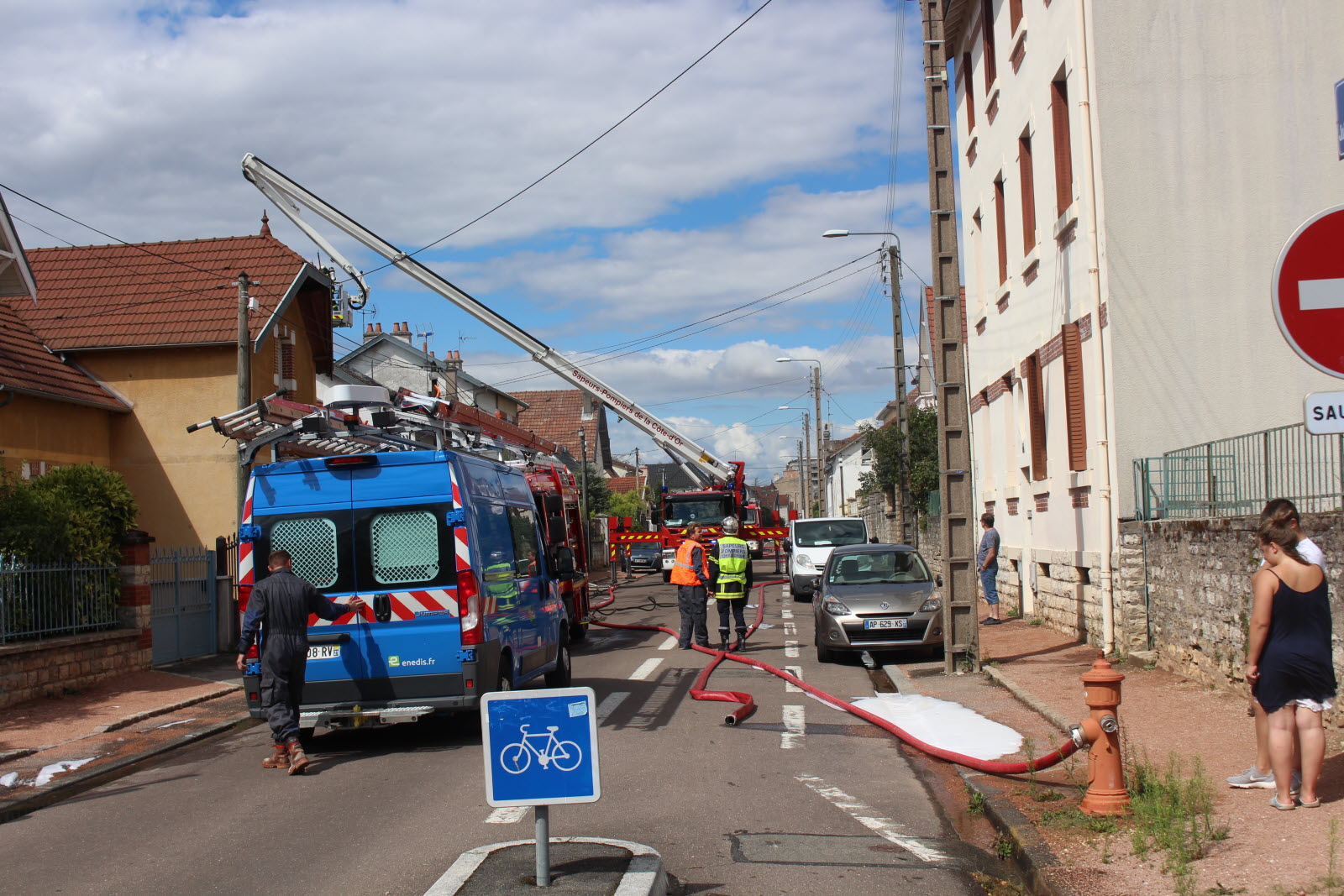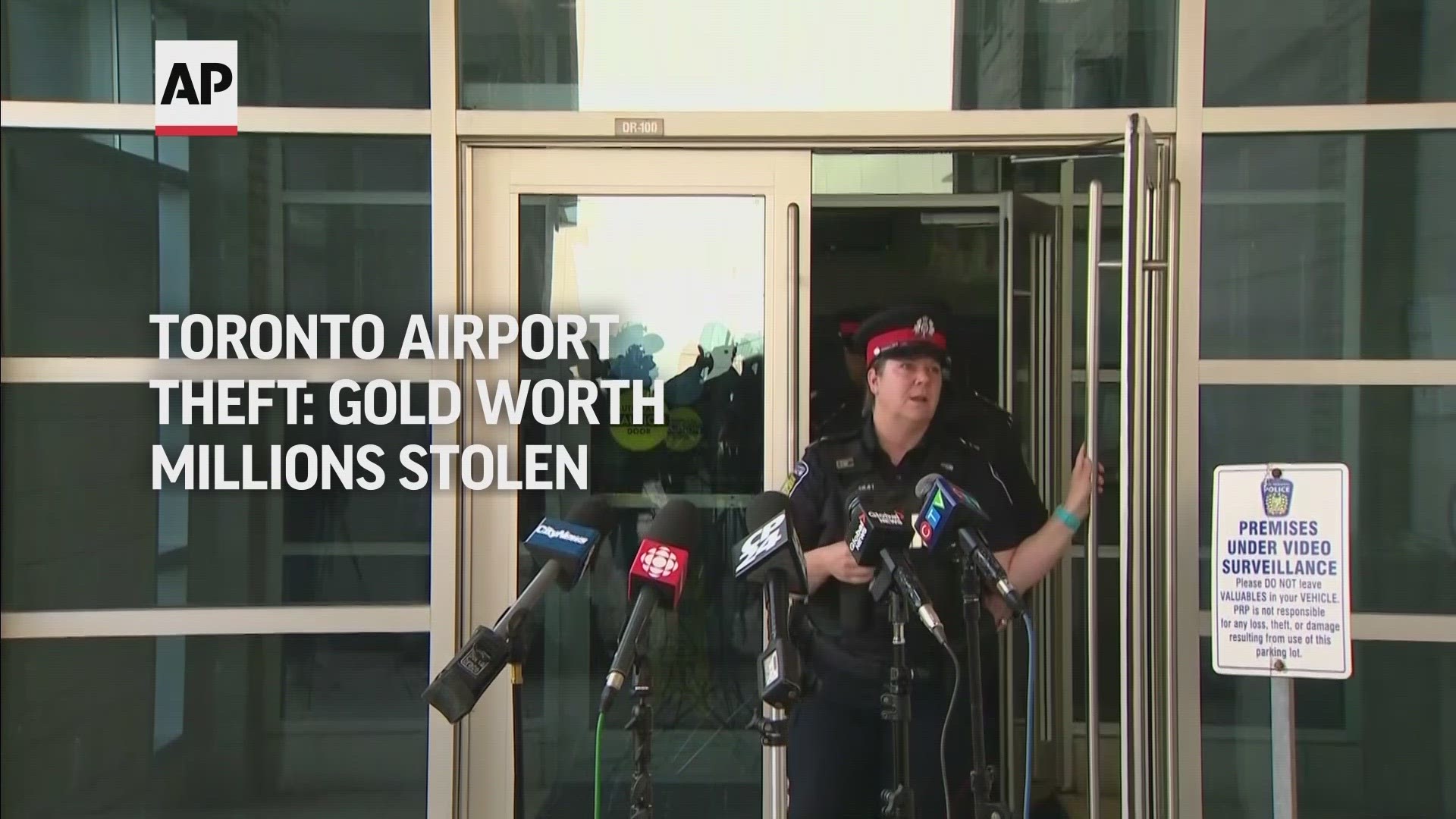Ohio Train Derailment: The Long-Term Impact Of Toxic Chemical Contamination On Buildings

Table of Contents
Types of Chemical Contamination and Their Impact on Buildings
The Ohio train derailment released a cocktail of toxic chemicals, but vinyl chloride stands out due to its known carcinogenic properties and persistence in the environment.
Vinyl Chloride and its Effects
Vinyl chloride, a colorless gas used in PVC production, is highly volatile and readily penetrates porous building materials. Its insidious nature makes complete removal exceptionally challenging.
- Health effects of vinyl chloride inhalation: Exposure can lead to liver damage, including angiosarcoma (a rare and aggressive liver cancer), respiratory problems, and neurological effects. Long-term, low-level exposure also poses significant health risks.
- Methods of vinyl chloride detection in building materials: Specialized testing is required to detect vinyl chloride in building materials. This often involves air sampling, material sampling (e.g., drywall, wood), and laboratory analysis using techniques such as gas chromatography-mass spectrometry (GC-MS).
- Difficulty of complete vinyl chloride removal: The pervasive nature of vinyl chloride makes complete removal from building materials difficult and expensive. Contaminated materials may require abatement or even complete demolition depending on the level of contamination. Vinyl chloride can adsorb onto surfaces and linger for extended periods, requiring careful and comprehensive remediation strategies.
Other Toxic Chemicals and Their Impact
While vinyl chloride is a primary concern, the derailment released other toxic chemicals, including butyl acrylate and ethylene glycol monobutyl ether. These substances also pose risks to building materials and human health.
- Examples of other released chemicals: The exact composition of the released chemicals is still being investigated, but reports indicate a range of hazardous substances with varying levels of toxicity and persistence.
- Their unique risks to building structures and human health: Each chemical has unique properties and potential health impacts. Some might degrade over time, while others may persist, leading to long-term exposure risks. Synergistic effects – where the combined effect of multiple chemicals is greater than the sum of their individual effects – are also a serious concern.
- The challenges of identifying and addressing multiple contaminants: The presence of multiple contaminants complicates the assessment and remediation process. Testing and cleanup strategies must address each substance individually, considering their unique properties and potential interactions.
Assessing and Mitigating Building Contamination
Determining the extent of contamination and implementing effective remediation strategies are critical steps in addressing the long-term effects of the derailment.
Identifying Contamination
Thorough assessment is vital to understand the scope of the problem.
- Importance of professional environmental assessments: Professional environmental consultants are needed to conduct a comprehensive assessment using appropriate testing methods and interpret the results accurately.
- Types of testing methods: These include air quality testing to measure airborne contaminants, material sampling and analysis to determine contamination levels in building materials, and soil testing to assess subsurface contamination.
- Interpretation of results: Expert interpretation of test results is critical to determining the extent of contamination and developing appropriate remediation strategies.
Remediation Strategies
Several remediation techniques can be employed, but their effectiveness varies depending on the type and extent of contamination.
- Decontamination methods: These might include cleaning, surface treatments, and specialized air filtration systems. The choice of method depends on the type and level of contamination.
- Demolition versus remediation: In cases of severe or widespread contamination, demolition may be the only feasible option. This is a costly and disruptive process but ensures the removal of contaminated materials.
- Cost considerations: Remediation can be expensive, potentially costing homeowners and businesses significant amounts of money. Insurance coverage and government assistance may be crucial.
- Long-term monitoring: Even after remediation, long-term monitoring is essential to ensure the effectiveness of the cleanup and detect any potential resurgence of contamination.
The Role of Insurance and Legal Recourse
Affected property owners may need to navigate complex insurance and legal processes to address their losses.
- Insurance coverage limitations: Standard homeowner's insurance policies may not fully cover the costs associated with environmental contamination resulting from the Ohio train derailment. Specific coverage for environmental hazards needs to be verified.
- Navigating legal processes: Affected residents and businesses may need to engage legal counsel to understand their rights and pursue compensation for damages. Class-action lawsuits may be a viable option.
- Seeking compensation for damages: Legal action may be necessary to secure compensation for property damage, remediation costs, and other losses incurred as a result of the derailment.
Long-Term Health and Economic Consequences
The Ohio train derailment's impact extends far beyond the immediate crisis, posing substantial risks to both public health and the local economy.
Health Risks for Residents
Long-term exposure to toxic chemicals can have severe consequences for residents' health.
- Specific health concerns related to vinyl chloride exposure: As noted, vinyl chloride is a known carcinogen, and long-term exposure can lead to liver cancer, respiratory issues, and other health problems.
- The need for ongoing health monitoring: Residents in affected areas should undergo regular health checkups and monitoring for potential health issues related to chemical exposure.
- The psychological impact on residents: The stress and anxiety associated with living in a contaminated area can also significantly impact mental health.
Impact on Property Values
Contamination concerns can severely depress property values, harming the local economy.
- Economic losses for homeowners and businesses: Decreased property values can lead to significant financial losses for homeowners and businesses in the affected area.
- Difficulty selling contaminated properties: Selling properties in a contaminated area can be extremely difficult, leaving owners with substantial financial burdens.
- Impact on community development: The long-term economic impact of the derailment could hinder community development and recovery efforts.
Conclusion
The Ohio train derailment's toxic chemical contamination poses significant long-term challenges to the buildings and residents of East Palestine. The pervasive nature of vinyl chloride and other hazardous substances necessitates comprehensive remediation efforts. Failure to address the contamination adequately will result in continued health risks and economic hardship for years to come. The need for thorough investigation, effective remediation, and long-term monitoring cannot be overstated. The impact on property values and the psychological toll on residents are also critical concerns demanding immediate attention.
Call to Action: If you suspect your building has been contaminated by the Ohio train derailment, contact local authorities and environmental experts immediately. Seek professional assessment and remediation to protect your health and property value. Stay informed about the ongoing situation and support the affected communities in their efforts to recover from this devastating environmental disaster. Don't underestimate the long-term consequences of toxic chemical contamination following the Ohio train derailment; act swiftly to safeguard your well-being and the future of your property.

Featured Posts
-
 Nyt Spelling Bee April 4 2025 Clues Hints And Pangram
May 10, 2025
Nyt Spelling Bee April 4 2025 Clues Hints And Pangram
May 10, 2025 -
 Un Debut D Incendie Ravage La Mediatheque Champollion A Dijon
May 10, 2025
Un Debut D Incendie Ravage La Mediatheque Champollion A Dijon
May 10, 2025 -
 Trumps 10 Tariff Threat Baseline Unless Exceptional Offer Received
May 10, 2025
Trumps 10 Tariff Threat Baseline Unless Exceptional Offer Received
May 10, 2025 -
 Fbi Investigation Millions Stolen Through Executive Office365 Account Hacks
May 10, 2025
Fbi Investigation Millions Stolen Through Executive Office365 Account Hacks
May 10, 2025 -
 Global Sea Level Rise Impacts And Mitigation Strategies
May 10, 2025
Global Sea Level Rise Impacts And Mitigation Strategies
May 10, 2025
